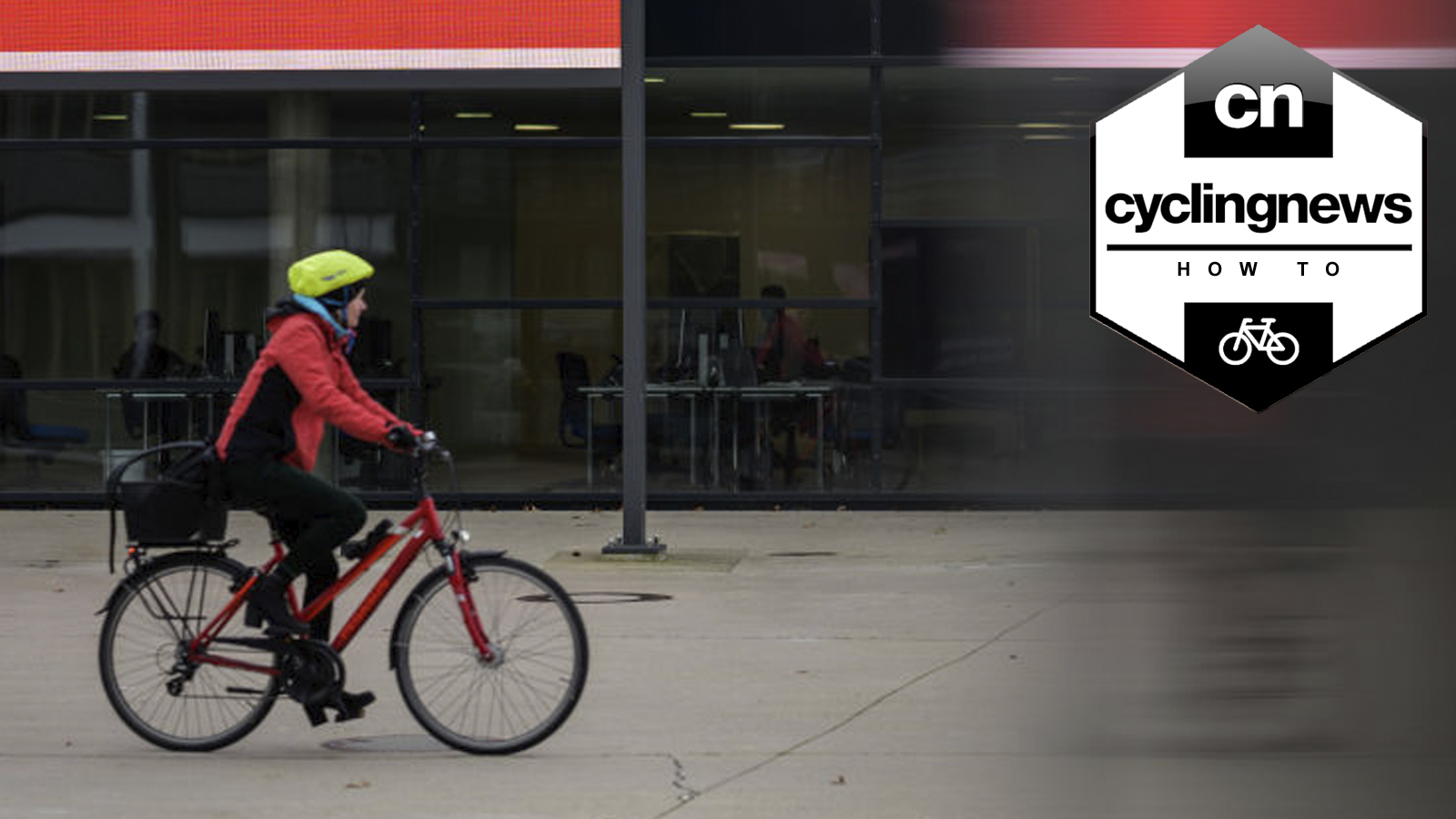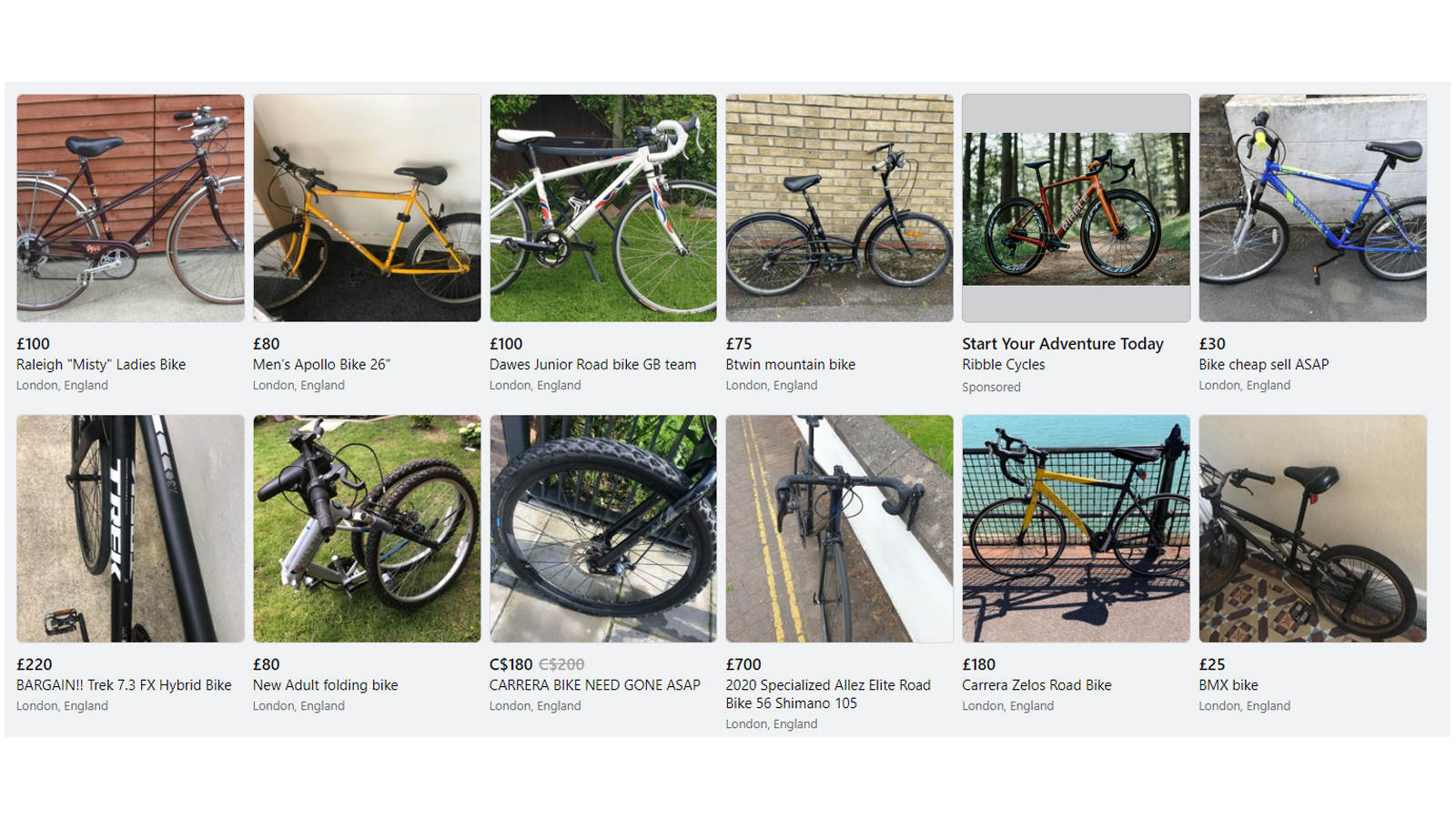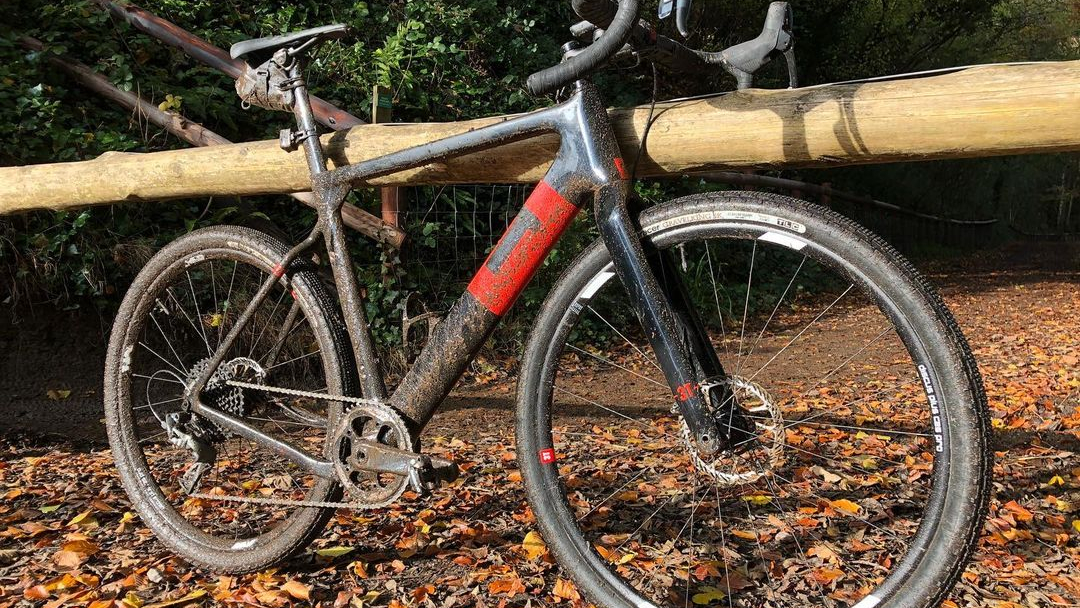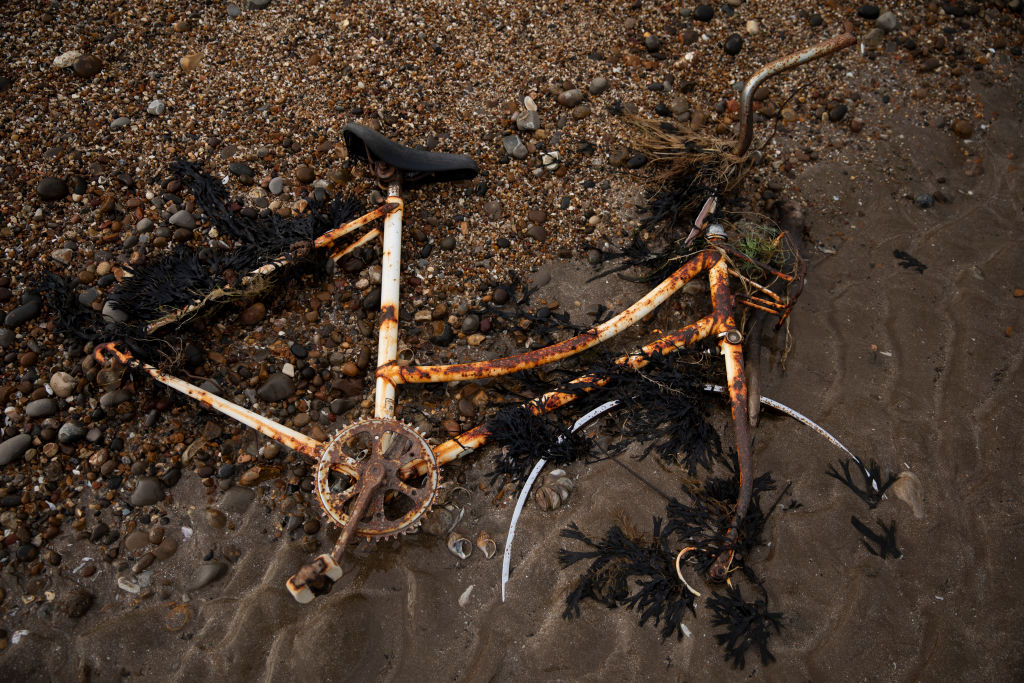How to buy a used bike: Tips for finding the best second-hand bikes
With high prices and worldwide shortages affecting bike stock, knowing how to buy a used bike could be the best way to your next new bike day

New bikes are great. You can ride them straight out of the shop complete with everything you need for the maiden voyage knowing that everything works perfectly and is covered by a warranty, but it all comes at a cost, and often a pretty steep cost at that. If you want to save some money on your next bike purchase, it's useful to know how to buy a used bike.
New bikes are also currently in short supply. We're all aware of the impact that the COVID-19 pandemic has had on businesses across the world, and the cycling industry hasn't been immune. Factories were forced to close and while many of them are back up and running, some remain shut to this day, and many of those that have reopened are working with social distancing measures in place that restricts workflow. At the same time, cycling has boomed in popularity, so while production was slow, sales were high and this inevitably led to a product shortage.
While spinning away on a brand new bike sounds great, it isn't a realistic prospect for every budget, and it might be downright impossible given the current situation with stock. That’s why purchasing a second-hand bike can be so much more appealing. You’ll save on costs, and if you know what to look out for, you'll still get a bike that’s in perfect working order.
You can find second-hand bikes all over the internet, from eBay and classifieds to Craigslist, Gumtree and Facebook Marketplace.
Of course, buying a second-hand bike is risky. You’re buying a bike that has been used – sometimes heavily – and maybe even crashed. There could even be damage to the frame unbeknownst even to the original owner, and it could have a number of problems that are just waiting to pop up. But don’t be scared: with good research and a small amount of mechanical skill, you will reap the financial rewards of purchasing a second-hand bike rather than a new one.
We've already overviewed where to buy a bike, and in that guide, one of our suggestions is to buy second-hand, so now it's time to take a deep dive into exactly how to buy a used bike. In this article, we’ll guide you through the buying process, and help you find the best second-hand bikes, so that once you're finished here, you'll be equipped with the knowledge to help save you money and ensure you get the perfect new-to-you bike.

Where to find used bikes
There are many different avenues in which you can buy a used bike, including in-real-life locations as well as online. The online giant is eBay, Craigslist is certainly up there for our US-based readers, Facebook Marketplace is growing at a rapid rate across the globe, and Gumtree is worth a browse if you're in the UK. You can find all sorts of used bike postings on these sites, or you could go to more cycling-specific sites such as Pinkbike, Bicycle Blue Book, The Pro’s Closet, Bikeroom, GearTrade, Bikeslice or Bikesoup.
Get The Leadout Newsletter
The latest race content, interviews, features, reviews and expert buying guides, direct to your inbox!
Craigslist gives you the option of meeting private sellers and doing a test ride before exchanging payment. However, stolen bikes (more on that below) are known to appear on Craigslist and others, and once you buy the bike, you are now in possession of the stolen property. So do your homework, ask for more information, and run the bike’s serial number through a bike registry such as Project 529 or Bike Index.
eBay has a huge number of options from road and mountain bikes, to track bikes and e-bikes. But unlike Craigslist, a test ride on the bike in-person before purchasing isn't a given (though it is possible if you ask the seller and you're willing to travel), so do as much research as you can beforehand. You can check the seller’s rating, reviews, and feedback to make sure they are legitimate; but buying on eBay is always riskier than exchanging in-person or at a bike shop.
If you’re on the lookout for deals, there’s a neat tool called FatFingers that searches eBay for misspelt listings. We’ve all been there, misspelling Pinarello or Specialized, and this tool can help you find bargains that are off the beaten path.
We recommend that beginners, or first-time used-bike buyers, go to a local bike shop and peruse the used bikes there. You can ask more specific questions, see the bike in person, and have a shop employee point out exactly what you are looking at. If you’re not a bike expert, then it can be a little confusing to figure out what exactly it means when the seller says something like "there was a cracked nipple replaced in 2019".
Browsing used bikes at a local shop will also give you the ability to test ride different options. If you're wondering 'what size bike do I need?', a test ride will help you feel out the difference between a small and a medium, or a 54 versus a 56. When shopping online, rarely will you get the opportunity to test ride before making the purchase.
This is especially important if you’re looking at buying from a bike manufacturer that you’ve never ridden before. Giant, for example, sizes their bikes in small, medium, and large, whereas Specialized uses the more common approach of sizing frames in centimetre increments, e.g. 56cm. If you’re used to one or the other, it can be difficult to try and convert your previous size to a new/used bike.
Research and asking questions
There’s a cliché that goes: “There are no stupid questions” and in the world of buying used bikes, the saying holds true. Basic questions such as, “Does this bike come with wheels?” or “Does it have brakes?” are just as valuable as any other question.
I’ve heard stories of people being misled into thinking the second-hand bike they bought was a complete bike and then it shows up at their doorstep and it’s just the frame. The moral of the story: don’t trust the pictures alone, read the fine print, and if you’re unsure, ask questions.
Second-hand bike postings can be wordy, especially if you’re finding them on Facebook Marketplace or eBay. People love their bikes, and they often have stories attached to them, so don’t be surprised if you’re reading a memoir under a used bike posting. But don’t skip over these sections either, as they could contain valuable information about the bike and its current condition. If the seller used to race, and has a few stories about gnarly crashes, beware. But if the seller loved this bike for pedalling around the neighbourhood with their family, you can have more peace of mind.
Short descriptions are quick and easy to read, but they also won’t provide a ton of information about the bike. As you’re getting ready to splash some cash on a serious purchase, you’re going to want as much information as possible. Here’s where the questions come in.
If the posting or description is limited, start by asking basic questions like:
- What is included? (Think: frame, wheels, handlebars, brakes, bar tape, tires, cables, housing, bottle cages, cranks, pedals, saddle, cassette, chain, and derailleurs)
- What colour is the bike? (Remember, the lighting in pictures makes a big difference)
We also recommend asking questions like:
- How long have you owned this bike?
- How many people have owned this bike?
- Do you have the original receipt?
- When was the last time this bike had service or repairs done? If so, what was repaired or replaced?
- Has there ever been a part of the bike that was replaced or repaired under warranty?
- Is there anything on the bike that is not working as well as it should?
- Has the bike ever been involved in an accident?
Starting your online search
There are more than a few options for finding a used bike, but let’s start on the internet. If you have an idea of what kind of bike you’d like, begin with searching the bike (or similar models) and finding out how much a new one costs. Whatever number you find, that is the top-end of your budget, as there's little point buying second hand if you can get a new version of the same thing for less.
Next, take your search into one of the online used bike marketplaces such as eBay, Facebook or Craigslist. There are more than likely a few options, so you'll need to narrow down your search by filtering for the right size, price range and in many cases, the seller's location.
Don’t forget this step – I’ve thought I'd found the perfect bike at a bargain price, gone twenty minutes down a rabbit hole reading the detailed description, only to scroll back to the top and realize that it’s two sizes too small and based 900 miles away.

What to look for in photos
Watch out for stock photos. You want good quality images – it doesn’t have to be shot by Jered Gruber, but it shouldn’t be a stock photo. Also, take a look at the cleanliness of the bike. If it’s covered in dirt and road grime, or it has a black or rusty chain, then you’ll know that the owner hasn’t kept up with the bike’s maintenance very well. This is a sign of wear and tear and that some (or most) components could need to be replaced sometime soon. If the visible components haven't been looked after, then you can expect the hidden components (bearings, for example) to be in even worse condition.
With that, you should always be on the lookout for signs of damage or neglect in the description and photos. These are the most critical and expensive issues to fix, and sometimes they’re not even salvageable. Keep in mind that buying a second-hand bike from a private seller means that the bike won't be covered by a warranty – that means that any and all repairs will come directly out of your pocket. So look carefully at those photos.
This is why buying a used bike online is so tough: it can be nearly impossible to spot nicks, dents, or damage to a bike from a picture alone. If you’re not a bike expert, then as before, we recommend heading to a local shop to view their used bikes, so that you can see any imperfections up close and personal – a helpful shop employee may even point them out to you.
Every bike component comes at a cost, and some are easier to replace than others. A new chain might only set you back £20/$30, whereas a new derailleur could be three to five times as much, depending on the model. When you’re perusing the photos, take a good look at the components, and don’t be afraid to ask the seller how many miles they’ve been ridden.
When it comes to frame damage, carbon is much more severely affected than aluminium. Cosmetic damage to a carbon frame could lead to a structural issue, and ultimately a catastrophic failure in the frame. Not good. Aluminium, steel or titanium frames, on the other hand, can handle a small dent or two, and be just as safe and rideable as before. However, you’ll still want to check the welds, as any damage or cracks here could lead to a structural issue and untimely failure. Ask the seller if and when the bike has been damaged, whether it was in a crash or simply tipped over in the garage. Buying a bike that has taken more than a few spills is quite a risk, and one that we do not recommend taking.
Sometimes you’ll find a cheap bike and wonder, “There’s no way that’s the actual price?” Beware of these postings, because they’re often too good to be true. The seller might be taking a picture of the complete bike, but in the fine print, you realize they’re only selling you the frame. Or the bike could be listed as in “new condition,” and by that, the seller actually means that the bike still has its original tyres and components. Are they bald, rusted, and worn out? Hopefully, you can tell from the pictures. Otherwise, we’d recommend steering clear.

How to spot stolen bikes
Speaking of too-good-to-be-true, stolen bikes are often sold at prices that seem unbelievable. The reason is that the seller wants to get the hot property off their hands quickly, so will sell it incredibly cheap to achieve this. Of course, as the buyer, you'd be the owner of stolen property: the police could simply come and take it away at a moment's notice, leaving you with nothing but a big hole in your pocket.
If you spot a listing that you suspect is a stolen bike, report it to the authorities. However, if you're unsure and you want to avoid being a victim, then there are precautions you can take.
Serial numbers or frame ID numbers are often found on the underside of the frame beneath the bottom bracket and are the number one way to find out if the bike is stolen. Ask questions if the listing seems too good to be true, and if the seller can’t provide the bike’s serial number, that is a huge red flag.
Ideally, you’ll want a picture of the bike’s serial number, and a copy of the original receipt. As mentioned above, you can run the serial number through a number of databases like Bike Register to find out whether it is stolen.
Spotting fake bikes and scams
As we already know, you can’t trust photos alone, and there are a lot of fake bikes on the internet that look exactly like the real-life frame.
If you suspect a frame might be fake, ask the seller for an original receipt. If they can provide a receipt from a reputable retailer, then your fears can be allayed, but if they can't, then don't be afraid to just walk away.
Simply gather as much information as you can before you even get close to completing the purchase.
Evaluating the seller
Depending on the site, there are a number of ways that you can evaluate a seller’s feedback and selling history. eBay has a number of easy-to-use tools, and you can sometimes scroll through pages of feedback from happy or angry buyers. A quick skim of their reviews and history should give you a good idea of whether you can trust them or not. You can also use feedback to see what other items they're selling, and use their seller profile to check what else they are selling at the moment. Use this to form a picture of the seller.
Be careful when using sites that have classified postings, as there’s no way you’ll be able to check the reputation of the seller. Meet them in person if possible, and ask for as much information as you can beforehand.
Your best and most trustworthy option is a local bike shop. They want to avoid problems as much as you do, so they’ll be happy to share any and all information about the bike, and make sure both parties are comfortable with the purchase before money changes hands.
Meeting a seller
If possible, we recommend meeting the seller in person when finally collecting the bike. That way, you can see it up close and personal, ask more questions, and maybe take it for a test ride before taking it home. Try to arrange a time during the day, when it is light, rather than at night when potential flaws might not be noticed. Don’t go in with a fearful attitude, but don't be complacent - remember you are meeting a stranger after all.
To be safe, it is best to meet in a public place, rather than at their front door. It’s not a bad idea to bring a friend or family member, just to make sure everything runs smoothly. As a buyer, ask the seller if you can pay via Paypal or bank transfer when collecting. This might cause a short delay, but it does save you from having to meet a stranger with potentially large sums of cash in your pocket.
It's a good idea to settle on a price beforehand so that there’s no disagreement when you’re standing in the parking lot, but equally, if you spot a flaw that wasn't highlighted in the pictures then don't be afraid to point it out. If you feel the price you've agreed is no longer fair, try to agree on a new price or walk away.
However, be mindful that a genuine seller will be in a similarly nervous position to you. They are also meeting a stranger, and they will be bringing with them an expensive bike that, in their mind, you could be planning to steal. They will be just as wary as you are.
If you do choose to have the bike shipped, make sure the seller packs it well to prevent damage in transit. Packaging a bike is both an art and a skill, and when you’re making a purchase this big, don’t be afraid to check with the seller to make sure they know what they are doing. There’s nothing worse than feeling like a kid on Christmas morning, going to open up the box, and finding a broken bike inside. Just in case, we recommend insuring the bike at its full value when shipping it to help protect against damages.
Buying a used bike checklist
When it comes to the inspection of a bike, don't be rushed. Taking more time now could save you countless hours - not to mention cash - down the road. There are a lot of moving parts to a bike, and a lot of potential areas for things to be damaged, so there are lots of things to check.
- Initial assessment: check over the whole bike for rust, cracks, dents and any crash damage. Scuffs to the shifters, bar tape, pedals or either side of the saddle suggest that the bike has been crashed. If you spot this, ask questions and see if the seller's response matches the evidence in the scuffs.
- Check the wheels: Spin them to check they are true. Look for wobbles (laterally and vertically). Also gauge how easily they spin, if they feel rough, then the bearings may need replacing. Look for bent, broken or missing spokes. Do the tyres look worn? Are they squared off, do they have bald patches, or do they have any of the canvas showing through? If so, these will need replacing.
- On a rim brake bike, check the braking surface. Most wheels have a small wear indicator, but if not, check how flat it is. If the braking surface is concave, this is an indicator of lots of wear and the wheels will soon need replacing.
- Check the brakes: are they easy to pull? If they are difficult, there is an issue somewhere, which could be the levers, the cables, or the calipers. Are the brake pads excessively worn? If it's a disc brake bike, does the rotor spin true?
- Check the headset: turn the handlebars and gauge whether it feels easy or rough. Rough suggests the bearings might be worn. With the bike on the floor, hold the front brake and rock the bike back and forth, look at the headset area to see if there's any movement that shouldn't be there.
- Check the groupset. Is it clean or rusty? Do the cranks spin smoothly or is there a rough grinding sensation. The latter will indicate worn bearings.
- If you can, take a chain wear indicator, which can be bought online reasonably cheaply. A badly worn chain will have also worn the cassette and the chainrings, which becomes an expensive fix.
- Go for a test ride
- Check the gears shift through the entire range of gears as they should both when pedalling easily and pedalling under load. If possible, find a small hill and try to shift gears whilst pedalling up it.
- Check the brakes again, get a feel for how powerful they are. Do they make a noise when being used?
- Is there any creaking or unexpected noise from the bike, most notably the bottom bracket?
- Does the bike actually fit? How is the geometry? Are you comfortable?
- Check the bolts. Are any of them missing? Are any rounded off? Are any rusted beyond removal?
- Check the seatpost moves freely; a seized seatpost can be a frame-killer.
If you find problems that you feel you can handle, then feel free to try and negotiate the price, but if you spot something that appears beyond repair, then don't be afraid to walk away.
Above all, trust your gut. As mentioned already, if a listing seems too good to be true, it probably is. And similarly, if a bike seems like more work than it's worth, then there will always be another available.
Zach is a freelance writer, the head of ZNehr Coaching, and an elite-level rider in road, track, and e-racing. He writes about everything cycling-related, from buyer's guides to product reviews and feature articles to power analyses. After earning a Bachelor’s Degree in Exercise Science at Marian University-Indianapolis, Zach discovered a passion for writing that soon turned into a full-fledged career. In between articles, Zach spends his time working with endurance athletes of all abilities and ages at ZNehr Coaching. After entering the sport at age 17, Zach went on to have a wonderful road racing career that included winning the 2017 Collegiate National Time Trial Championships and a 9th place finish at the 2019 US Pro National Time Trial Championships. Nowadays, Zach spends most of his ride time indoors with NeXT eSport.